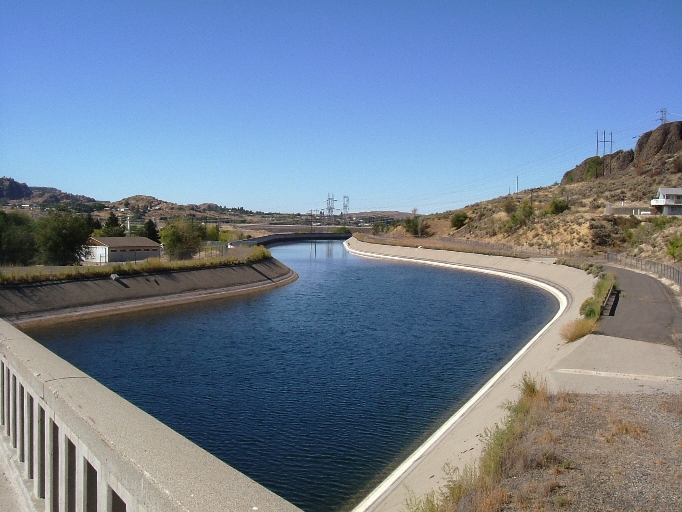9.3. Compressed Air and Pumped Hydro
Compressed Air Storage
Compressed air storage technology may become an efficient solution of storing energy generated by large solar plants. The concept is as follows.
Air is used as the energy transfer medium. During the daytime, solar power is used to heat and compress air in an airtight chamber. When energy is needed, that compressed air can be expanded through a turbine or another expansion device to drive a generator to create electricity. Compressed Air Energy Systems (CAES) have been in use in some conventional power plants, and they are making a come-back as energy storage systems for renewable energy plants.
Traditionally, CAES technology used underground geological formations, such as salt caverns, as reservoirs for compressed air. While this approach was effective at some locations, it was not universal, as geology in some areas may be just unsuitable. A newer approach with CAES is to use human-made chambers - large pipes, such as those used for natural gas pipelines. While it involves more construction and installation, this type of artificial storage can be employed virtually anywhere and scaled up to the required capacity by simply using longer pipes.
Reading Assignment
Please read the following review to understand the basic principles and cons and pros of CAES:
Review article: Wang, J., Lu, K., Ma, L., Wang, J., Dooner, M., Miao, S., Li, J., and Wang, D., Overview of Compressed Air Energy Storage and Technology Development, Energies, 2017, 10, 991.
Please read the following article to learn about the new approach in CAES technology:
Web article: LaMonica, M., Compressed Air Energy Storage Makes a Comeback, IEEE Spectrum, 2013.
This article explores the idea of underwater compressed air storage, which may become an efficient storage solution for solar plants located near the coastline.
Web article: Dorminey, B., Underwater Compressed Air Energy Storage: Fantasy or Reality? Renewable Energy World, 2014.
Based on this reading, answer the following self-check questions:
Check Your Understanding Question 1 (Multiple Choice)
Check Your Understanding Question 2 (Essay)
Why is some amount of natural gas needed in traditional CAES systems?
Check Your Understanding Question 3 (Multiple Choice)
Pumped Hydro Energy Storage
Pumped-storage hydropower (PSH) is the type of storage technology that is based on storing energy in the form of potential energy of water. It consists of two water reservoirs at placed at different elevations connected by discharge channel. The available energy can be used to pump water to the upper reservoir (recharge phase), and energy is released when water moves back down to the lower reservoir through the turbine (discharge).
Closed loop PSH storage does not need to be connected to an outside natural body of water, and all the water is re-circulated.
This storage technology is not new. The first commercial systems employed for storage were implemented in the 1970s, and the design changed very little since then. According to U.S. DOE, pumped-storage currently accounts for 95% of all utility-scale energy storage in the United States. However, additional investments are considered in innovative pumped storage technologies to explore its potential for storing non-dispatchable renewable power generated from utility scale wind and solar farms and improving grid resiliency and reliability.
Listen to the recent podcast that discusses the potential of various energy storage options for utility scale renewables:
What to do you think? Which method of those mentioned in the discussion has a better chance to become the main player for storing mega- and giga-amount of power?

